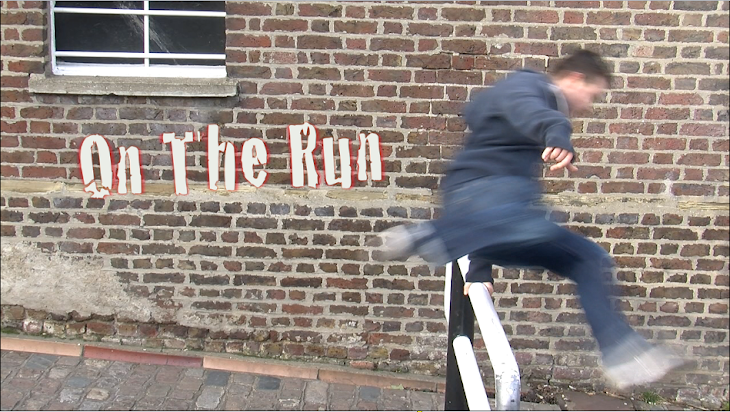In what ways does your media product use, develop or challenge forms and conventions of real media products?

Many of the thriller openings produced by my college and indeed seen in the cinema share similar traits. Filming conventions that have proven successful for the genre time and time again. In our film i think they're are several traits that really make this an action thriller, primarily it was the fast tempo soundtrack and solid editing but without some fantastic shots to work with we wouldn't have been able to set the pace at all.
What makes our sequence interesting to watch i feel is the varying distances and angles from which we filmed our protagonist. We had to make sure each shot showed built upon his situation instead of just repeating it, whether that was showing his movement alongside the canal or giving the viewer a closeup of his clothing.

Here's a high angle long shot, a mid-shot, and a very effective ground level shot all of which develop his position in the movie, revealing something new.
When we were editing the film we took a risk in making the running section considerably long, there was a concern that the viewer might lose interest but on the contrary i think this approach was a reliable method of building up questions in the viewers mind. They want to know who he is and why he's running so very hard and while it's not an approach taken by many films i'm sure you'll find a few of the very best thrillers do just that, for example, Memento which is a fascinating to watch because it is presented in such a non-linear fashion keeping the viewer entranced right the way through. So to get our audience interested we relied on the film convention that people love having questions that they can solve as they watch something through.

The editing was perhaps my favorite part, as already mentioned we used short clips or fast cuts, to set the pace for the film however i think the slow motion effect applied during the editing was one of our best decisions. We had considered using slo-mo when we planner our storyboard but we were aware that not many films we had seen had really utilized the effect, We reasoned that abuse of it might make the project look unnecessarily amateur, so, we gave it a purpose. The slow motion is there to emphasize the credits but i think what it does even more effectively is emphasize the speed at which our hero is moving. It's the contrast between our characters running and all those quick cuts with the slowed down footage showing the intricacies of his simple movements that make it particularly satisfying to watch.

And what would a title sequence be without the opening credits? Personally i was really pleased with ours! I think they were particularly well suited to our film because we really considered how best to implement them. We gave them a jittery movement that you gave you an impression of the state the protagonist is in after all his hectic running, and their speed meant they made a stronger impact and looked good when we complimented them with the slow down of footage. We also considered where to position them over the footage, take for example the first screenshot on the left below, if we had placed them up in the corner the viewer would have to treat the text and the characters movement as to separate things to take in, by combing them we make both more effective. In the second one we considered the way the character was moving and so the way their eyes would move across the screen, i think that was fairly important, we positioned our credits so that a viewer would be able to read them naturally and not have to constantly be darting their look back and forth across the screen. One of the classic film formula we used was putting in the title on black at the beginning, i think this makes a name more memorable, also the lack of video meant we were able to draw emphasis to the non-diegetic sound of his heart beat that we faded in and used as a sound bridge to transition into the footage, it was a good decision.

The final aspect of titles we had to consider were font style. We knew we wanted a sans serif style for an informal look and we went for something bold to leave a lasting impression, something that has always proven sucsessful in films, take for example Rocky or Fight club (see below). But that wasn't enough to make it an appropriate font, it need to reflect the, if you like, personality of our film. Which is how we decided on our font, with a slightly rugged edge, cracked in places or slightly skew-if- it really represented an aspect of living in London that our protagonist and many of our viewers will have grown up very familiar with. I think it's also a font that could be described as rebellious, which is certainly appropriate for our film and where i like to imagine it going, ( A sort of one man vs The Man story).
Three shots from the film Fight club that was very successful. Like us they also went with a bold font and considered the way it transitioned in relation to its surroundings, however this is an entirely bespoke sequence computer generated, quite different to what we produced but i like to think both worked well :)

